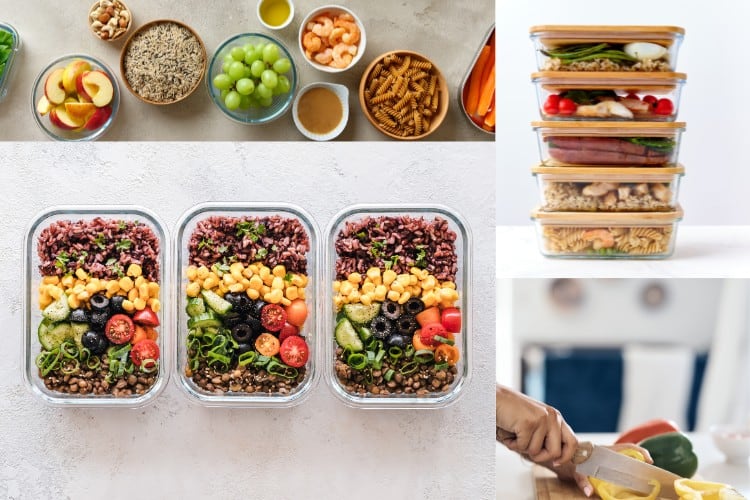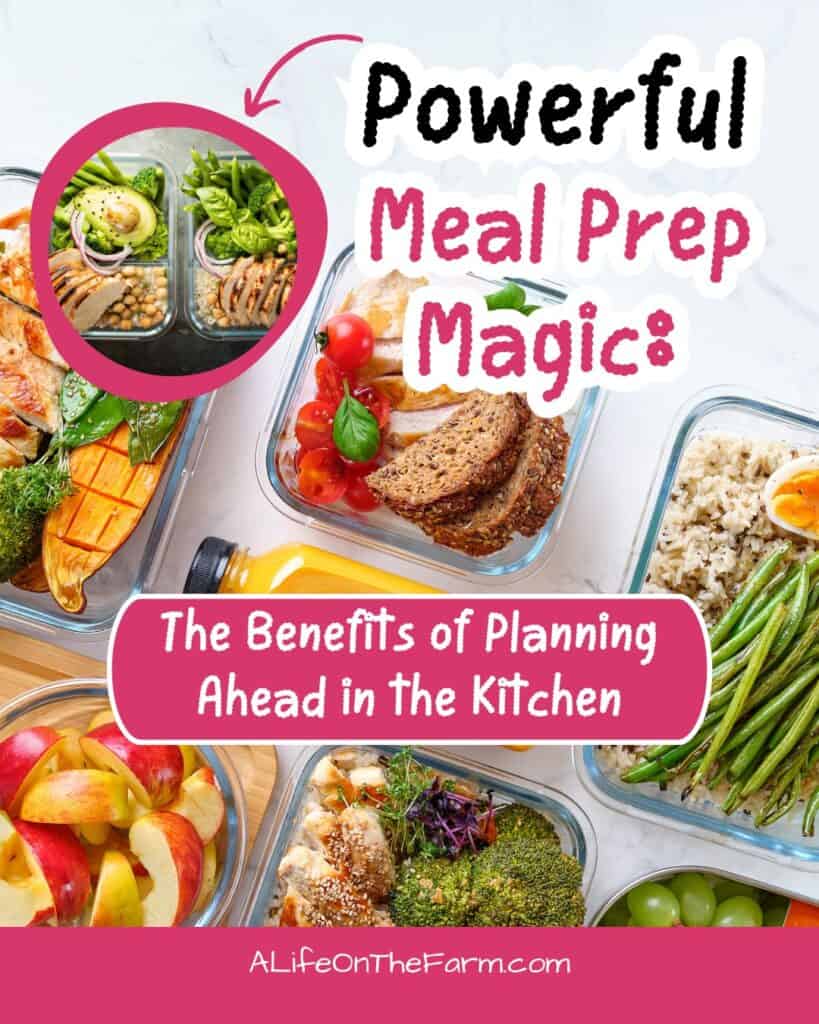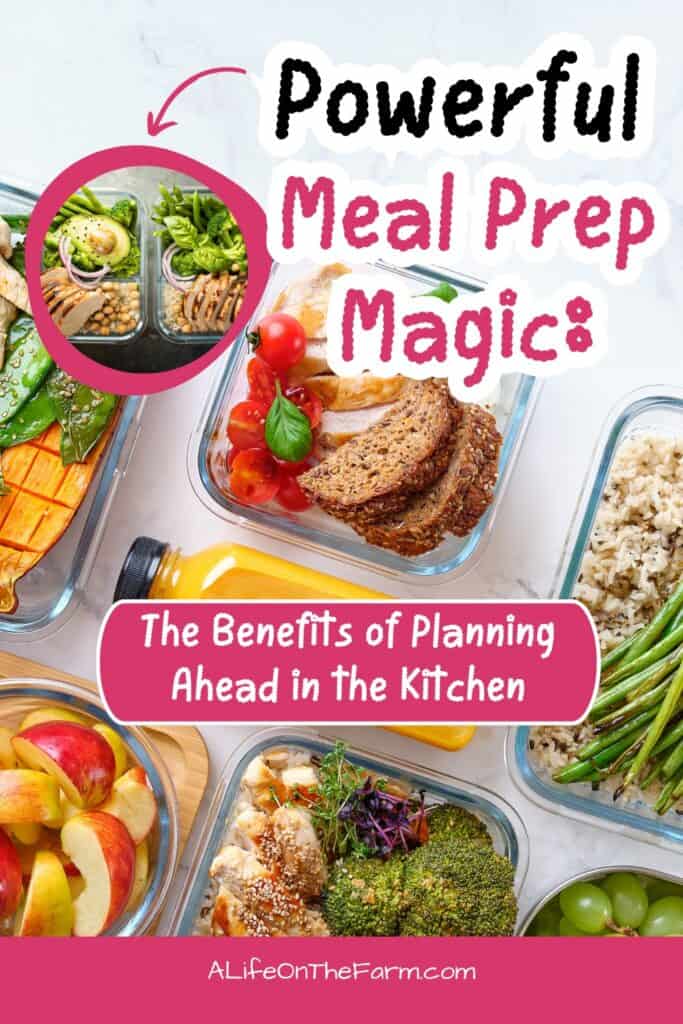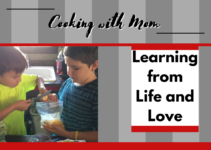Introduction to Meal Prep: What It Is and Why You Need It
Meal prep isn’t just a trend—it’s a time-saving, stress-reducing, and health-boosting strategy that can revolutionize the way you cook and eat.
Meal prep is the practice of planning and preparing meals in advance to simplify your cooking routine and promote healthier eating habits. This approach involves cooking large batches of food at once, portioning them into individual servings, and storing them for later use. The benefits of meal prepping are numerous and can significantly enhance your daily life.
Here’s why it deserves a spot in your weekly routine:
1. Save Time
- Efficient Cooking: Preparing meals in batches reduces time spent on daily cooking.
- Streamlined Shopping: Meal planning leads to focused grocery lists and fewer trips to the store.
Efficient cooking is a key component of meal prep. By organizing your ingredients and streamlining your cooking process, you can create multiple meals in a fraction of the time it would take to prepare each one individually. This efficiency leads to time-saving meals that fit seamlessly into even the busiest schedules.
Incorporating meal prep into your routine can lead to healthier eating habits, reduced stress during the week, and more time for other activities—making it an invaluable practice for anyone looking to improve their lifestyle.
2. Eat Healthier
- Portion Control: Pre-portioned meals help avoid overeating.
- Better Choices: Having healthy meals ready prevents impulsive, less nutritious options.
Meal prep has emerged as a powerful tool for individuals seeking to enhance their healthy eating habits and streamline nutrition planning. By dedicating time to prepare meals in advance, you can ensure that you have nutritious options readily available throughout the week. This practice not only promotes a balanced diet but also supports portion control, which is essential for weight management.
One of the primary health benefits of meal prep is the ability to make intentional food choices. When meals are prepped ahead of time, it becomes easier to avoid unhealthy convenience foods that often lead to poor dietary decisions. By planning your meals, you can incorporate a variety of fruits, vegetables, whole grains, and lean proteins into your diet, ensuring that each meal contributes positively to your overall nutrition.
3. Save Money
- Less Waste: Prepping uses up fresh ingredients efficiently.
- Budget-Friendly: Planning ahead avoids last-minute takeout or dining out expenses.
4. Reduce Stress
- Fewer Decisions: With meals planned and ready, you avoid the daily “what’s for dinner?” dilemma.
- Peace of Mind: Knowing you’re prepared brings ease and confidence to your week.
5. Stay Organized
- Label & Store: Use clear containers and labels with dates for easy identification.
- Prep in Stages: Chop veggies, cook grains, and portion proteins so everything’s ready to assemble.
6. Customization & Variety
- Personal Preferences: Customize meals to suit individual tastes and dietary needs.
- Mix & Match: Prep components (grains, proteins, veggies) and combine them differently throughout the week.
How to Get Started with Meal Prep: Tips for Beginners
Getting started with meal prep can seem daunting, but with the right approach, it can be a straightforward and rewarding process. Here are some essential meal prepping tips to help beginners ease into this healthy habit.
First, invest in quality meal prep containers. These should be durable, microwave-safe, and ideally compartmentalized to keep different food items separate. Glass containers are a popular choice as they are both eco-friendly and versatile.
Next, grocery shopping for meal prep is crucial. Start by planning your meals for the week ahead based on recipes you want to try. Create a detailed shopping list that includes all necessary ingredients to avoid impulse buys at the store. Stick to whole foods like vegetables, lean proteins, and whole grains for balanced meals.
Set aside a specific day each week dedicated to your meal prep session. This could be Sunday or whatever day fits best into your schedule. During this time, cook larger batches of food that can easily be stored in your containers for quick access throughout the week.
By following this beginner meal prep guide and implementing these tips into your routine, you’ll find that preparing healthy meals becomes more manageable and enjoyable over time.
Meal Prep Ideas for Every Diet: From Vegan to Keto
Meal prepping is an excellent way to streamline your weekly cooking and ensure you have healthy, delicious meals ready to go. Whether you’re adhering to a vegan lifestyle, following a keto diet, or exploring gluten-free options, there are diverse meal plans that cater to every dietary preference.
For those opting for vegan meal prep, consider recipes like chickpea salad wraps or quinoa bowls loaded with seasonal vegetables. These dishes can be made in bulk and stored in the fridge for easy access throughout the week.
If you’re on a keto diet, keto meal prep recipes often include high-fat ingredients such as avocados and nuts. Dishes like zucchini noodles with pesto or cauliflower rice stir-fry can be prepared ahead of time and reheated for quick lunches or dinners.
For followers of the paleo diet, meals should focus on whole foods. Think grilled chicken with roasted sweet potatoes and steamed broccoli—simple yet satisfying options that can be prepped in advance.
Lastly, don’t forget about gluten-free options! Quinoa salads or baked sweet potatoes topped with black beans are not only nutritious but also versatile enough to suit various tastes. By incorporating these meal prep ideas into your routine, you can enjoy a variety of flavors while adhering to your specific dietary needs.
The Best Tools and Equipment for Successful Meal Prepping
Successful meal prepping requires the right tools and equipment to streamline the process and enhance efficiency. Here’s a look at some of the best meal prep tools you should consider integrating into your kitchen routine.
First and foremost, high-quality food storage containers are essential. Look for airtight options that come in various sizes to accommodate different meals and ingredients. Glass containers are particularly popular due to their durability and microwave-safe properties, while plastic containers offer lightweight convenience.
Next, kitchen gadgets for meal prep can significantly speed up your cooking time. A reliable food processor is invaluable for chopping vegetables, making sauces, or even preparing dough quickly. Additionally, an immersion blender can help create soups or smoothies directly in their cooking vessels without the need for transferring contents.
Cooking appliances for efficiency also play a crucial role in successful meal prepping. Slow cookers and instant pots allow you to prepare large batches of meals with minimal effort, while air fryers can provide healthier alternatives to traditional frying methods without sacrificing flavor.
Incorporating these tools into your meal prepping routine not only simplifies the cooking process but also ensures that you have delicious, nutritious meals ready to go throughout the week.
Start Your Meal Prep Journey Today for a Healthier Lifestyle!
Embarking on your meal prep journey is a transformative step toward achieving a healthier lifestyle. By dedicating time to plan and prepare your meals in advance, you can ensure that you have nutritious options readily available, reducing the temptation of unhealthy choices. Meal prepping not only saves time during busy weekdays but also helps in managing portion sizes and controlling ingredients, leading to better dietary habits.
To get started, begin with simple recipes that can be easily scaled for batch cooking. Invest in quality storage containers to keep your meals fresh and organized. Remember to experiment with different flavors and ingredients to keep your meals exciting and enjoyable. As you become more comfortable with the process, you’ll find it easier to maintain consistency in your healthy eating habits.
Meal prep is the ultimate act of self-care in the kitchen. With just a little time up front, you’ll enjoy a week of nutritious, delicious meals—and more free time to savor them.
A Life on the Farm is beginning a series of informational and instructional posts concerning various aspects of the much needed cooking skills we are talking about. Be sure to subscribe and come back for that and more!
MORE WAYS TO CONNECT
We also, as a homesteading family, have a variety of blogs that might interest you. A Life on the Farm focuses on the more personal side of the homesteading life. We discuss subjects like family, parenting, relationships, homeschooling, cooking, canning and so much more.
Two Oaks Farm Talk concerns the more technical side of homesteading. We discuss subjects like gardening, food prep, and farm building and construction with lots of tutorials!
Farm Raised Family is basically a hub for everything under the Two Oaks Farmstead umbrella. You can learn a great deal about all parts of the farmstead there. The Farm Raised Family blog focuses on financial matters such as budgeting, saving, and more and on current events affecting families.
You can also have a more in depth look at all that we do by visiting our Two Oaks Farmstead YouTube Channel and be sure to subscribe so that you don’t miss a thing!
Farm Life and Freedom is the new podcast we are in the process of launching! It is going to be so much fun! You could also check in with our Farm Life and Freedom Youtube Channel.
Two Oaks Farmstead is the farm store… the one that holds the umbrella! Check us all out and join us, not only on our blogs and Farm Life and Freedom podcast but come join the fun on Facebook, Instagram, Twitter… wherever you get social!










